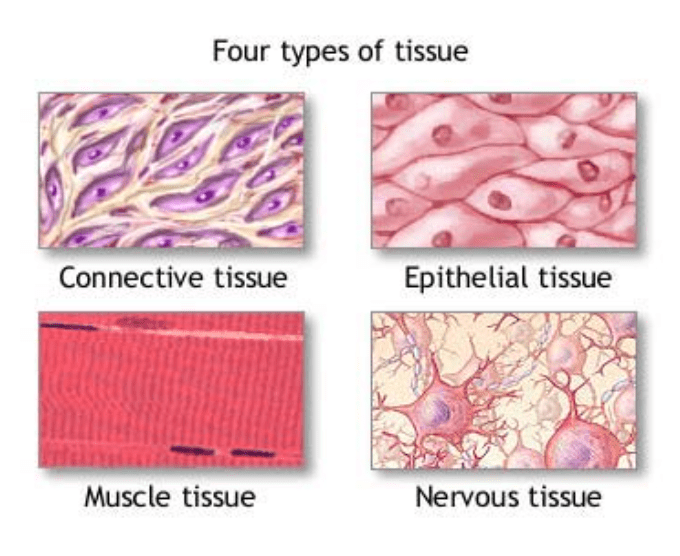
Tissues of the human body can be classified under 4 major sub-types: epithelial, nervous, muscle, and connective (Delforge, 2002). Connective tissue bind cells, other forms of tissues, and organs in a way, which provides mechanical support, strength, integrity, and form to structures found within the body (Delforge, 2002). Finally, connective tissue is composed of 3 primary structural constituents including cells, fibers, and ground substance (Delforge, 2002).
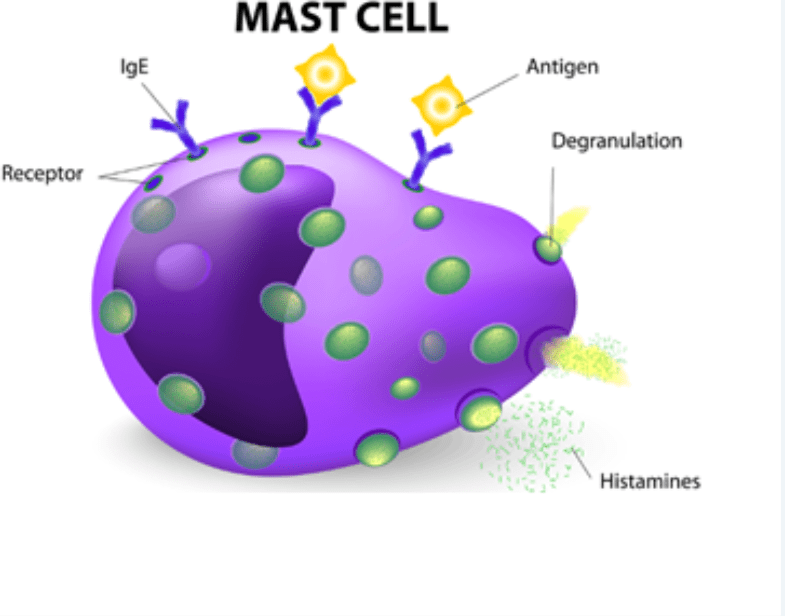
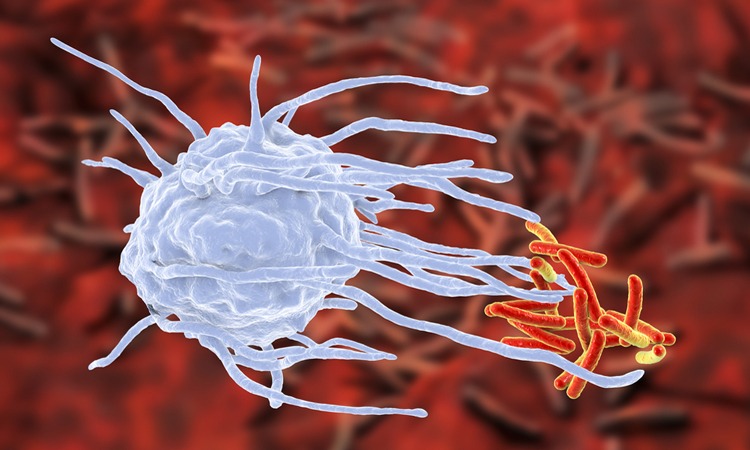
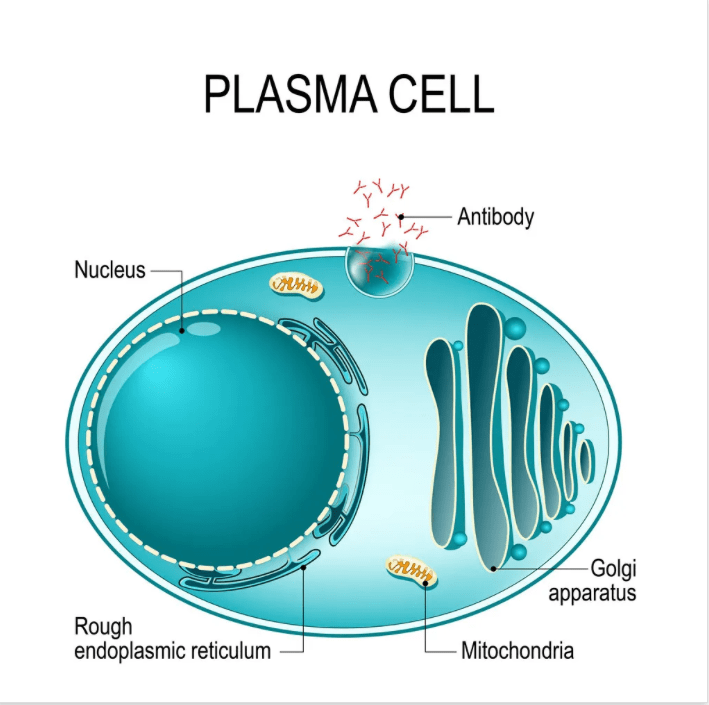
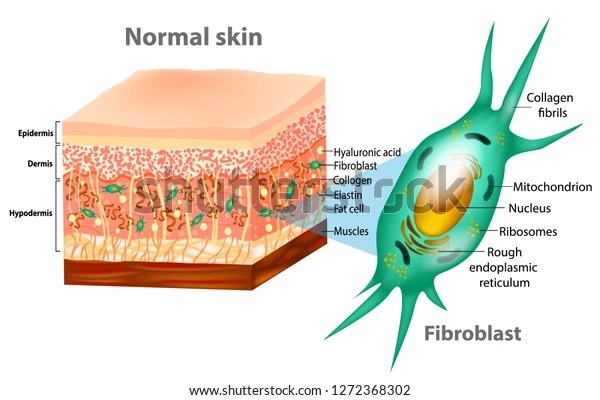
Connective tissue cells can be broken down into 4 types, which include mast cells (i.e., help mediate inflammation), macrophages, plasma cells (i.e., help neutralize and clear pathogens during the later stages of inflammation), and fibroblasts (i.e., synthesizes collagen in the extracellular matrix during the repair process) (Delforge, 2002).

The extracellular matrix holds within it, fibers which help develop specific properties to connective tissue. The aforementioned fibers are broken down into 3 sub-types: collagen, elastic, and reticular (Delforge, 2002). Collagen, a form of protein, provides strength and stiffness, and is the most prevalent fiber type within the musculoskeletal system of the body (Delforge, 2002). Elastic fibers primarily contribute to the tensile and recoil (i.e., elasticity) strength of connective tissue and are thus found within pliable tissues (i.e., skin). Reticular fibers are less abundant, and very thin. However, they do provide a degree of support, mostly in organs and glands (i.e., liver, spleen) (Delforge, 2002).

Ground substance comprises the third component of connective tissue. It is characterized by a gelatinous form, and occupies spaces between cells and fibrous components of soft connective tissues, while providing structural support and lubrication (Delforge, 2002). Ground substance is comprised of water, protein, and carbohydrate molecules. Collectively, the aforementioned aggregates of substances are known as glycoproteins, whose purpose is to bind cells to the extracellular matrix, and aid in structural support during connective tissue repair (Delforge, 2002).

Ligaments, tendons, and joint capsules receive their strength from connective tissue. However, there are permutations of connective tissue that serve unique functions. Ligaments, for example, require resiliency to tissue loading in a linear direction. Thus, a form of connective tissue exists to accommodate such a requirement, known as dense regular connective tissue (Delforge, 2002). Collagen, one of three fiber types in connective tissue, is primarily responsible for the strength and resistance to tension found in dense regular connective tissue (Delforge, 2002).
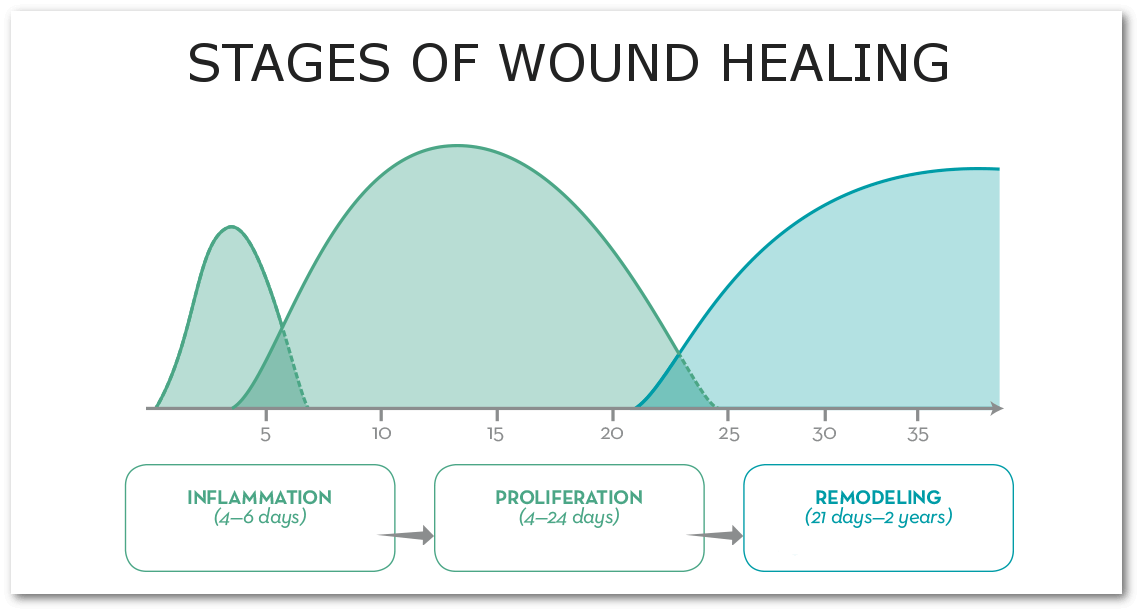
Following the onset of connective tissue trauma (i.e., hemorrhage and hemostasis) are 3 stages of repair: inflammation stage, fibroplasia stage, and the scar maturation stage (Delforge, 2002). The inflammation stage is characterized by 2 responses: a primary and secondary inflammatory response. The purpose of the primary response is to “flood” the injured region via edema, effusion, hyperthermia, and cells (i.e., phagocytic), which consume and neutralize invading pathogenic microorganisms (Delforge, 2002). If the body fails to conclude the aforementioned response, it transitions into the secondary response whereby the immune system reacts to specific pathogenic agents. The secondary response is characterized by pain and muscle spasm, both considered neural consequences of an unsuccessful primary response (Delforge, 2002).
The secondary stage of connective tissue repair occurs towards the end of the inflammation stage. Here, the body begins to develop scarring over the injured region, a process known as fibroplasia (Delforge, 2002). The secondary stage is also characterized by an event known as wound contraction, whereby the size of the tissue defect is reduced. The final stage of connective tissue response continues developing and remodeling the newly formed scar in a way, which optimizes structure and function (Delforge, 2002).
Ligaments, tendons, and joint capsules receive their strength from connective tissue. However, there are permutations of connective tissue that serve unique functions. Joint capsules (i.e., shoulder), for example, require resiliency to tissue loading in a multiple directions, as the shoulder has many degrees of freedom. Thus, a form of connective tissue exists to accommodate such a requirement, known as dense irregular connective tissue (Delforge, 2002). Collagen, one of three fiber types in connective tissue, is primarily responsible for the strength and resistance to tension found in dense irregular connective tissue (Delforge, 2002). Unlike dense regular connective tissue, which is strong in a linear fashion, dense irregular connective tissue is resilient to tension in multiple directions because of its irregular fiber pattern, making it an ideal candidate for capsules found around joints, such as the shoulder (Delforge, 2002).
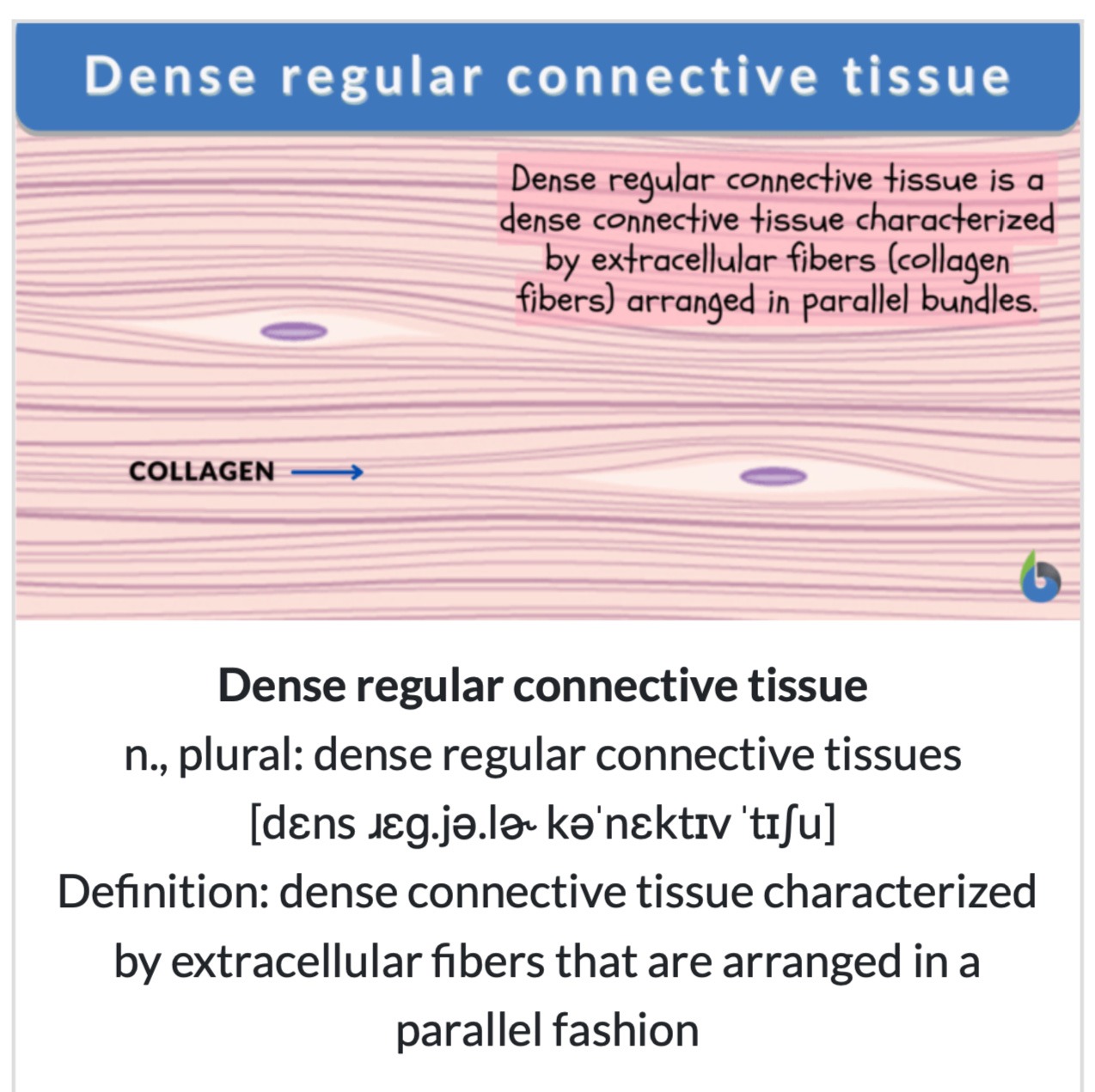
Dense regular connective tissue contains within it, closely packed collagen fibers that run parallel to each other. Such a configuration and architecture creates resistance to tension in a linear fashion (Delforge, 2002). Ligaments and tendons would be examples of structures requiring dense regular connective tissue.
Tissue healing can be defined as an innate response to injury whereby dead, or lost, tissue is replaced by living tissue (Delforge, 2002). Generally speaking, injured tissues are healed through a combination of 2 primary mechanisms: regeneration and repair. Regeneration restores tissues back to their original structure and function, and is thusly considered the most ideal method of healing. Repair is characterized by a less than ideal healing environment and/or whose cells have limited regeneration capability. As a consequence, much of the injured tissue is replaced by fibrous scar tissue, which may inhibit the full restoration of function (Delforge, 2002). Both mechanisms of healing will restore structure. However, regeneration will restore function to a higher degree because there is a greater abundance of cells (i.e., labile and stable cells), which divide and reproduce the original tissue (Delforge, 2002).
References
Delforge, G. (2002). Musculoskeletal trauma; Implications for sports injury management.Champaign, IL: Human Kinetics.
-Michael McIsaac
